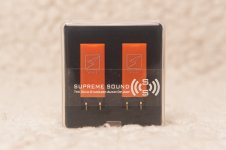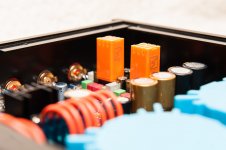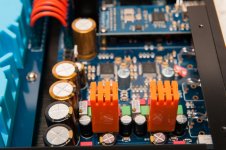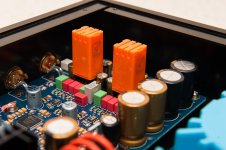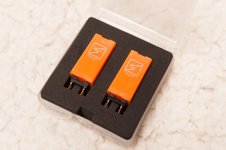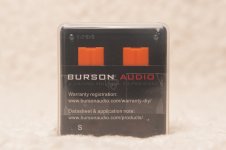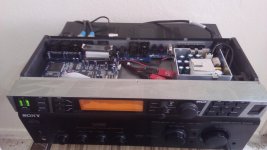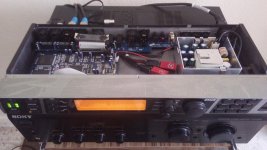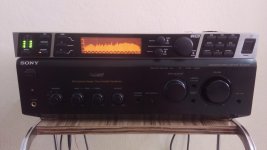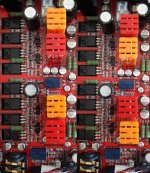Hey everyone,
Had an opportunity to get my hands on a couple of Burson Audio Supreme Sound Opamp V6 classic which I installed on my DIY AK4495 dual mono configuration DAC. Been listening to it for a few days now and wanted to share here my findings with about 50hrs of playing time so far.
Packaging – The op-amps arrived via registered mail in bubble wrap, housed in clear plastic casing with each unit separated and held in place by sturdy closed cell foam. I don’t see how it can be damaged in shipping if handled correctly.
Installation - If you've never tried changing op-amps before, don't fret because it's quite easy. There’s a half-moon marking or notch on the Burson Audio op-amps to match the IC socket or slot in your device’s PCB. You can visit Burson Audio’s website for the detailed installation guide with illustrations. It took me about 10 minutes in total from removing the top cover of my DAC’s enclosure to closing it back in place.
Also, something to consider before purchasing is the size of these op-amps, measuring 12.4mm X 14.5mm X 29mm (0.48 in x 0.57 in x 1.14 in) which according to Burson Audio is the smallest discrete op-amps in the world. I was worried about the height (1.14in) as my DAC is housed in quite small form factor enclosure. With a little over a millimetre in height clearance, I was able to put back the top cover without issues. Another thing to check is if there are other parts closely installed to the IC socket, as you can see in the pictures, the plastic housing is touching the 2 capacitors on each side of the opamps but nothing to worry about.
Sound – I have a few IC op-amps to compare these with, there are distinct differences to my system’s sound when changing from one to another.
The Burson Audio V6 classic, was described as “engaging” on their website while the more expensive Vivid model was said to have “incredible dynamic range” and “three dimensional soundstage”. Though the latter would be something most look for in the sound of their system I wanted mine to be more engaging. The first time I installed the Burson Audio V6 Classic I spent an entire afternoon listening, then the next day, a Saturday I spent the afternoon switching from OPA627, to OPA134 to the Burson V6. Next day I spent the morning switching from NE5534, to LME49710 then to the Burson V6. The Burson never left the DAC since then.
The Burson Audio V6 Classic is as described, they are more engaging in a way that the vocals and mids are focused with just the right amount of details elsewhere and doesn’t add sibilance to the highs. I often listen to Melody Gardot’s Live in Europe album because I love the way she interacts with the audience and try to keep them engaged, in the track 10 “Baby I’m a fool (Live in London)” the banter between Melody and one guy in the audience and then she tries to imitate the British accent was very clear and made me laughed. Another favourite artist of mine is Ray Lamontagne, Trouble is one of the most played albums in my system, the recording is not what an audiophile would consider great but the music is fantastic. Ray’s raspy voice and the emotion he puts through every verse is extraordinary, and it seemed to me the experience was more enhanced with the Burson Audio V6 Classic.
My Conclusion – one question we all ask is if an audio item is worth the money and effort, I can say these Burson Audio V6 op-amps are. I prefer the sound of my system with it installed over the IC op-amps I’ve compared it with. I spent most part of an entire week comparing, swapping and listening to avoid the placebo or new gear excitement effect, still I like it in my system. And of course, result will vary from system to sytem so this still comes with the usual caveat; YMMV.
Had an opportunity to get my hands on a couple of Burson Audio Supreme Sound Opamp V6 classic which I installed on my DIY AK4495 dual mono configuration DAC. Been listening to it for a few days now and wanted to share here my findings with about 50hrs of playing time so far.
Packaging – The op-amps arrived via registered mail in bubble wrap, housed in clear plastic casing with each unit separated and held in place by sturdy closed cell foam. I don’t see how it can be damaged in shipping if handled correctly.
Installation - If you've never tried changing op-amps before, don't fret because it's quite easy. There’s a half-moon marking or notch on the Burson Audio op-amps to match the IC socket or slot in your device’s PCB. You can visit Burson Audio’s website for the detailed installation guide with illustrations. It took me about 10 minutes in total from removing the top cover of my DAC’s enclosure to closing it back in place.
Also, something to consider before purchasing is the size of these op-amps, measuring 12.4mm X 14.5mm X 29mm (0.48 in x 0.57 in x 1.14 in) which according to Burson Audio is the smallest discrete op-amps in the world. I was worried about the height (1.14in) as my DAC is housed in quite small form factor enclosure. With a little over a millimetre in height clearance, I was able to put back the top cover without issues. Another thing to check is if there are other parts closely installed to the IC socket, as you can see in the pictures, the plastic housing is touching the 2 capacitors on each side of the opamps but nothing to worry about.
Sound – I have a few IC op-amps to compare these with, there are distinct differences to my system’s sound when changing from one to another.
The Burson Audio V6 classic, was described as “engaging” on their website while the more expensive Vivid model was said to have “incredible dynamic range” and “three dimensional soundstage”. Though the latter would be something most look for in the sound of their system I wanted mine to be more engaging. The first time I installed the Burson Audio V6 Classic I spent an entire afternoon listening, then the next day, a Saturday I spent the afternoon switching from OPA627, to OPA134 to the Burson V6. Next day I spent the morning switching from NE5534, to LME49710 then to the Burson V6. The Burson never left the DAC since then.
The Burson Audio V6 Classic is as described, they are more engaging in a way that the vocals and mids are focused with just the right amount of details elsewhere and doesn’t add sibilance to the highs. I often listen to Melody Gardot’s Live in Europe album because I love the way she interacts with the audience and try to keep them engaged, in the track 10 “Baby I’m a fool (Live in London)” the banter between Melody and one guy in the audience and then she tries to imitate the British accent was very clear and made me laughed. Another favourite artist of mine is Ray Lamontagne, Trouble is one of the most played albums in my system, the recording is not what an audiophile would consider great but the music is fantastic. Ray’s raspy voice and the emotion he puts through every verse is extraordinary, and it seemed to me the experience was more enhanced with the Burson Audio V6 Classic.
My Conclusion – one question we all ask is if an audio item is worth the money and effort, I can say these Burson Audio V6 op-amps are. I prefer the sound of my system with it installed over the IC op-amps I’ve compared it with. I spent most part of an entire week comparing, swapping and listening to avoid the placebo or new gear excitement effect, still I like it in my system. And of course, result will vary from system to sytem so this still comes with the usual caveat; YMMV.
Attachments
Hi guys,
We are glad you are enjoying Burson Audio Products. We send free opamps (V5i / V6) every month:
Supreme Sound Opamp V5i – Burson Audio
Supreme Sound Opamp V6 – Burson Audio
Please PM me anytime if you have a good DIY audio project.
Happy listening,
We are glad you are enjoying Burson Audio Products. We send free opamps (V5i / V6) every month:
Supreme Sound Opamp V5i – Burson Audio
Supreme Sound Opamp V6 – Burson Audio
Please PM me anytime if you have a good DIY audio project.
Happy listening,
When are you going to do a data sheet on the V6 opamps? In the V6 product page there is only a V5 data sheet but nothing on the V6.
TJ
TJ
Hi Takitaj,
Thanks for your comments. I sent you a PM regarding the V6 spec sheet. Thank you.
Best regards,
Thanks for your comments. I sent you a PM regarding the V6 spec sheet. Thank you.
Best regards,
Deq2496 burson v6 vivid
Hi friends
IC3 and IC4 of deq2496 were used in output buffer
amplifier sony ta fe600r player ibasso dx90
I tested the deq2496 at flat settings when you plug it into the device, the AB class will sound like A class from A amplifier. A remarkable point,
The V6 Vivid Opamps have a very vivid voice. Neutral and detailed sound with a tight bass effect dynamic field perfectow and medium tones are very accurate and have exactly as needed. Bass is quite low and deep
The V6 Vivid has a clean and clear treble response.
Highly dynamic, impressive and detailed musical.
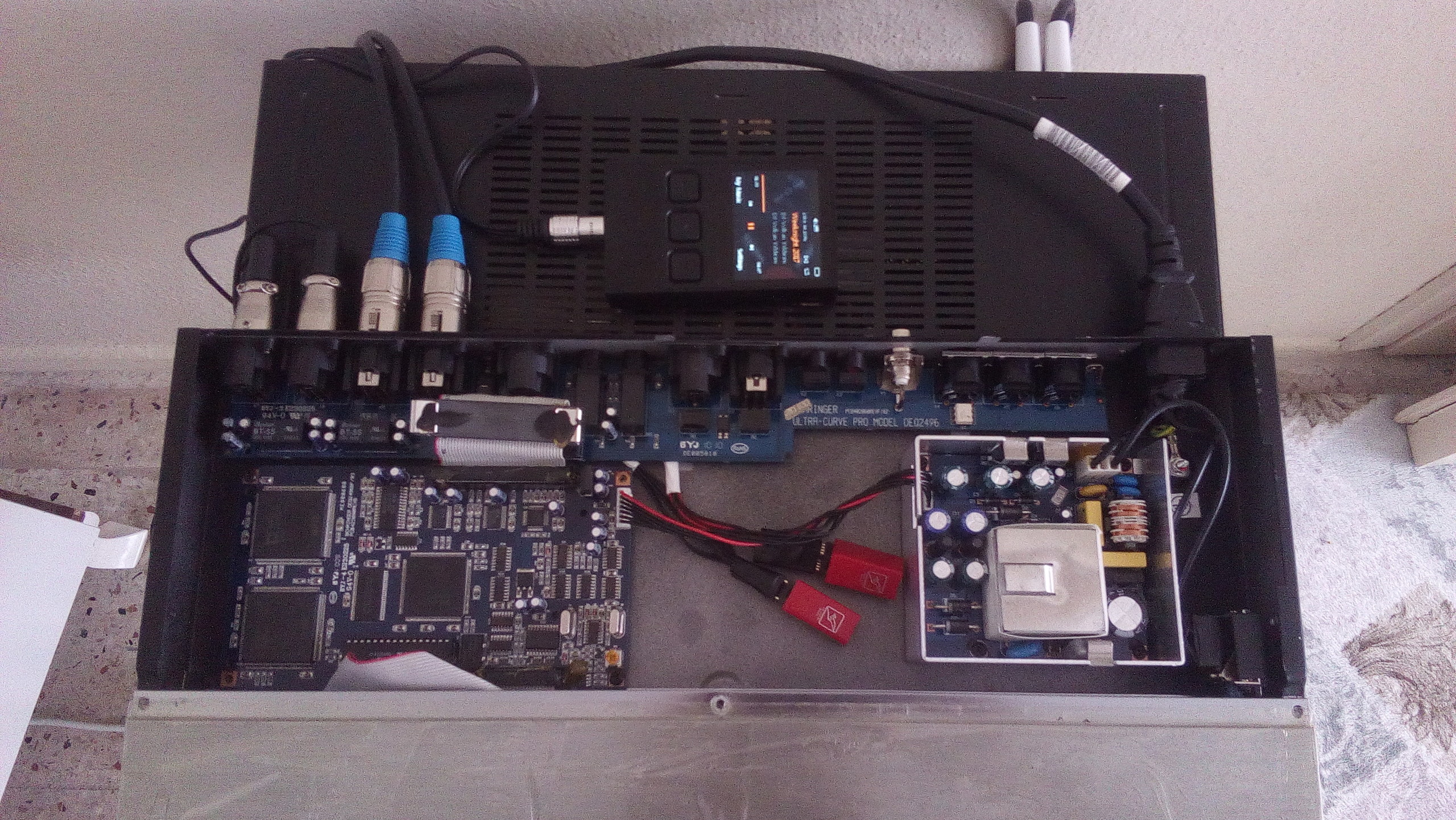
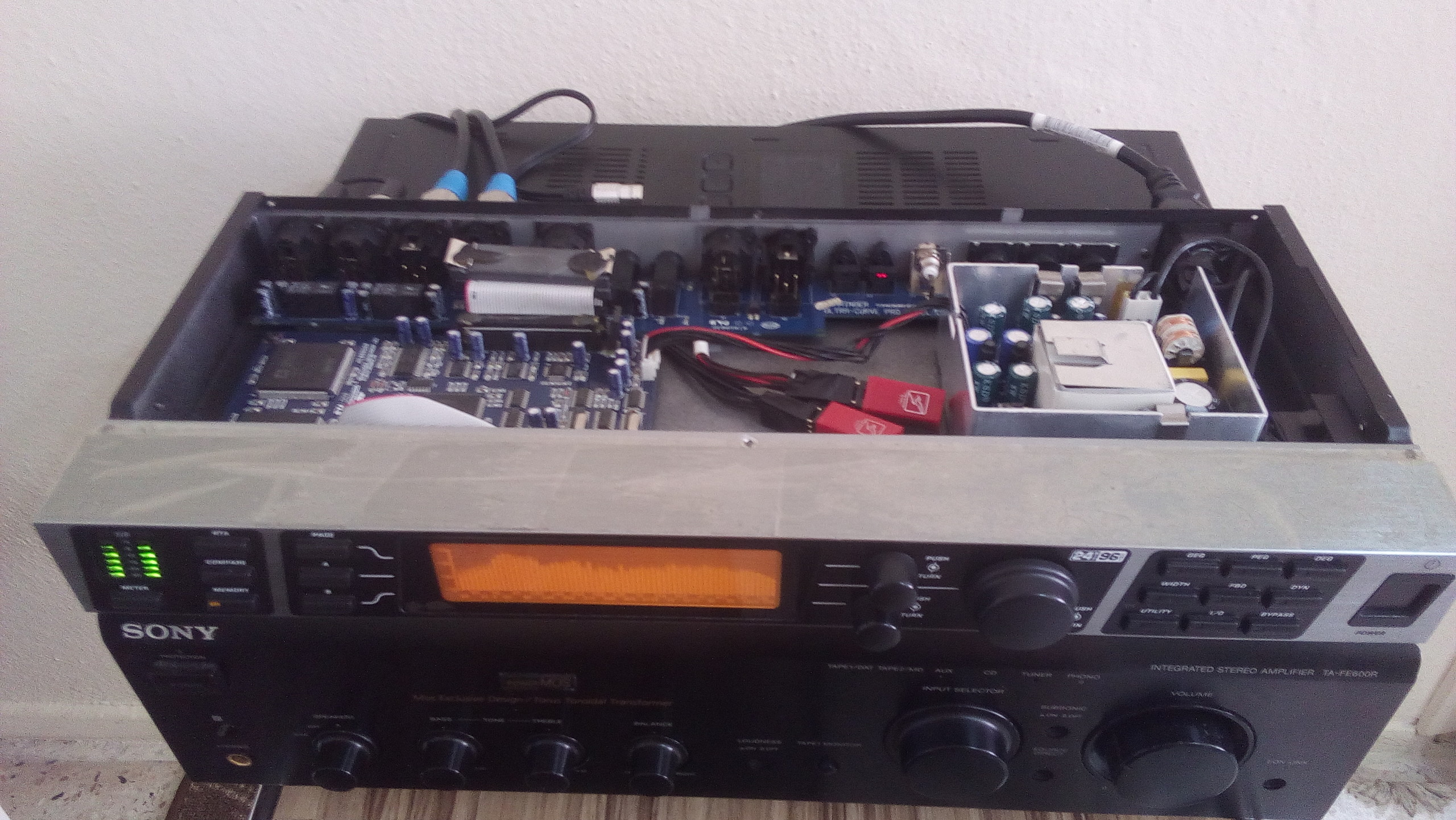
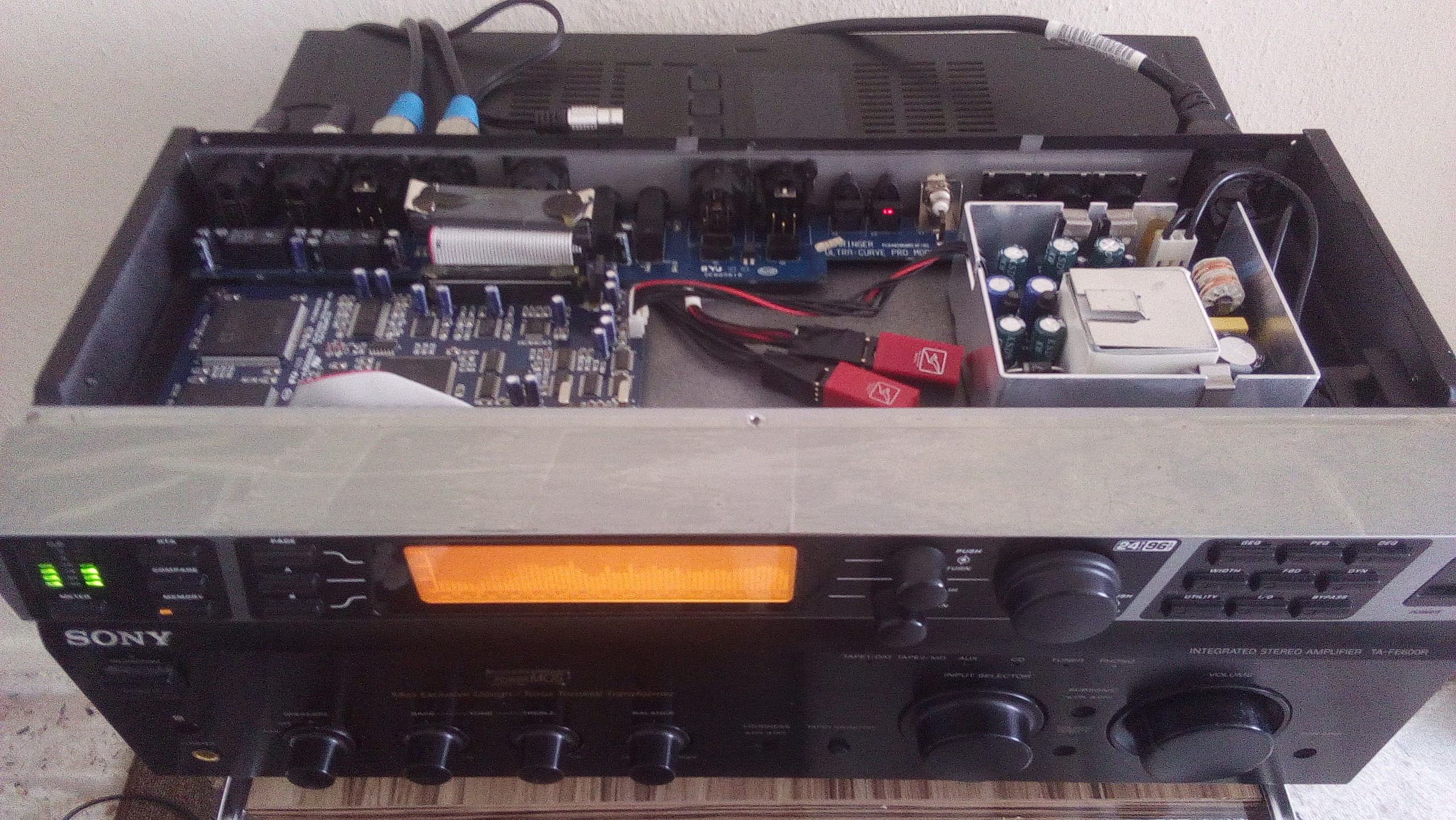
Hi Takitaj,
Thanks for your comments. I sent you a PM regarding the V6 spec sheet. Thank you.
Best regards,
Hi friends
IC3 and IC4 of deq2496 were used in output buffer
amplifier sony ta fe600r player ibasso dx90
I tested the deq2496 at flat settings when you plug it into the device, the AB class will sound like A class from A amplifier. A remarkable point,
The V6 Vivid Opamps have a very vivid voice. Neutral and detailed sound with a tight bass effect dynamic field perfectow and medium tones are very accurate and have exactly as needed. Bass is quite low and deep
The V6 Vivid has a clean and clear treble response.
Highly dynamic, impressive and detailed musical.



Hi Takitaj,
Thanks for your comments. I sent you a PM regarding the V6 spec sheet. Thank you.
Best regards,
Hi friends
IC3 and IC4 of deq2496 were used in output buffer
amplifier sony ta fe600r player ibasso dx90
I tested the deq2496 at flat settings when you plug it into the device, the AB class will sound like A class from A amplifier. A remarkable point,
The V6 Vivid Opamps have a very vivid voice. Neutral and detailed sound with a tight bass effect dynamic field perfectow and medium tones are very accurate and have exactly as needed. Bass is quite low and deep
The V6 Vivid has a clean and clear treble response.
Highly dynamic, impressive and detailed musical.
Attachments
Hi,
In the recent past my Playmate is completed with two V6 Classic opas.
 First of all I choose the configuration/position of V6 Classic and Vivid opas, to decide which one is better to my taste. After that I compare the best setup with the sound of OPA1612 in the same position.
First of all I choose the configuration/position of V6 Classic and Vivid opas, to decide which one is better to my taste. After that I compare the best setup with the sound of OPA1612 in the same position.
I find the fact true, that as you can peel an onion’s layers off, you can get better and better quality with changing the components and get even closer to the reproduction of a live concert.
Using better and better operational amplifiers (OPAs), linear power supplies etc. we can get further in the layers of the onion, and get higher quality of the music.
Just take a look at my perceptions how can I hear the different configurations (LowPass stage, I/V stage)
LP: Classic – I/V: Vivid
Neutral and dim, almost dry tones. Less interesting sounding, whereas very precise, and I like the violin a lot.
LP: Vivid – I/V: Classic
Warmer and fuller tones. The sound of the instruments shows up much stereophonic
LP: OPA1612 – I/V6 Classic
Rambling parts, less defined bass appears, like the musicians play far, behind a curtain. The pale and toneless sound sift from a glass shade. It’s like the voices from a closed place and you wants to set them free to change the boring tones to much more live-like experience.
Interesting that, I did like OPA1612 rather with the Vivid.
It seems to be Burson opa - , the V6 Classic and Vivid set a higher standard
SMPS vs linear power supply
As compared to the linear one, the music become much boring and also slower, and the saxophone crows.
We can hear a weightless, undynamic, slushy sound, slurred parts from a curtain-covered distant stage.
The linear power supply provide a much audiophile quality by far, as a much detailed and tight, live concert experience-like music. The bass, drums, and the bass guitar parts are well separated from each other, although the musicians are at close quarters.
I would like to attract your attention to the fact, that the differences showed up after contrasting the two power supplies Also with the commercial power supply only, Playmate is a worthy of note favorite of mine. To summarize, the presence of the linear power supply serve a better music quality
Summary
With the Burson V6 Vivid and Classic opa-s and a linear power supply, we can manage to get hold of a DAC , a source of a delightful sound as a Burson Playmate!
Thank you for your attention!
In the recent past my Playmate is completed with two V6 Classic opas.
I find the fact true, that as you can peel an onion’s layers off, you can get better and better quality with changing the components and get even closer to the reproduction of a live concert.
Using better and better operational amplifiers (OPAs), linear power supplies etc. we can get further in the layers of the onion, and get higher quality of the music.
Just take a look at my perceptions how can I hear the different configurations (LowPass stage, I/V stage)
LP: Classic – I/V: Vivid
Neutral and dim, almost dry tones. Less interesting sounding, whereas very precise, and I like the violin a lot.
LP: Vivid – I/V: Classic
Warmer and fuller tones. The sound of the instruments shows up much stereophonic
LP: OPA1612 – I/V6 Classic
Rambling parts, less defined bass appears, like the musicians play far, behind a curtain. The pale and toneless sound sift from a glass shade. It’s like the voices from a closed place and you wants to set them free to change the boring tones to much more live-like experience.
Interesting that, I did like OPA1612 rather with the Vivid.
It seems to be Burson opa - , the V6 Classic and Vivid set a higher standard
SMPS vs linear power supply
As compared to the linear one, the music become much boring and also slower, and the saxophone crows.
We can hear a weightless, undynamic, slushy sound, slurred parts from a curtain-covered distant stage.
The linear power supply provide a much audiophile quality by far, as a much detailed and tight, live concert experience-like music. The bass, drums, and the bass guitar parts are well separated from each other, although the musicians are at close quarters.
I would like to attract your attention to the fact, that the differences showed up after contrasting the two power supplies Also with the commercial power supply only, Playmate is a worthy of note favorite of mine. To summarize, the presence of the linear power supply serve a better music quality
Summary
With the Burson V6 Vivid and Classic opa-s and a linear power supply, we can manage to get hold of a DAC , a source of a delightful sound as a Burson Playmate!
Thank you for your attention!
Attachments
Last edited:
- Home
- Design & Build
- Parts
- Burson Audio V6 Classic experience
